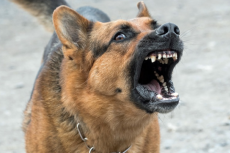Agression likely caused by hormones
Why do some dogs become aggressive, or do they exhibit aggressive behavior when they are on a leash? Scientists in Washington think they have found the statement: hormones. And with that discovery they pave the way to develop therapies to make a walk for dogs and owners enjoyable again.
A known fact, a leashed dog, is only grinning, falling or barking, or all three, to other dogs. Laying the foundation for a dangerous action, fighting. And despite the fact that research has been conducted on the role of testosterone and serotonin in this type of behavior, these only seem to play a part.
That is why the research now specifically looked at the role of oxytocin (the "cuddly hormone") and vasopressin. Hormones that we also have as humans. These hormones appear to play an important role in the social behavior of dogs. And by recognizing the biological factors behind aggressive behavior, the foundation is laid for a change in that behavior.
Also read: More anxiety and aggression after castration
Also read: More anxiety and aggression after castration
Oxytocin is also called the mother hormone. In humans and dogs it is produced by the body when "kissed or cuddled". Vasopressin is a related hormone that also plays a role in the retention of water in the body.
But vasopressin is more. It is associated with aggression in humans, and highly aggressive people would have high levels of vasopressin. The researchers have now looked at this hormone in dogs with line aggression. For every aggressive dog that participated in the study, another dog of the same breed, gender and age was also found as a comparison.
During the experiment, every dog was kept on a leash by his owner. In the room, barking sounds from another dog were played behind a curtain. Then the curtain was pulled away and there was a life-size model of a dog with a handler. Also "daily" objects were shown as a cardboard box, a yoga ball and a garbage bag.
Both the behavior of the dog and the hormone levels in the body were then measured. None of the dogs responded aggressively to the box, the ball or the bag, but on the dog model the reactions were fierce, growling, barking and jerking on the line. And in all dogs with this kind of aggressive reactions there appeared to be a higher level of vasopressin in the body, which seems to point to a link between vasopressin and aggression. The level of oxytocin did not vary significantly.
The researchers also compared the results with measurements in guide dogs / therapy dogs, bred on non-aggressive behavior. In those dogs there appeared to be more oxytocin, also in relation to the vasopressin. And as such, a medicinal solution for aggressive behavior could lie in the role of oxytocin, which is also available synthetically.
source
Endogenous Oxytocin, Vasopressin, and Aggression in Domestic Dogs





